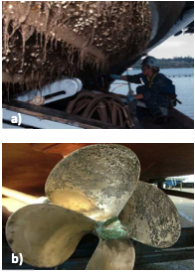Machine learning for complex fluid mechanics and heat transfer

Introduction, relevance and objectives
In engineering solutions hydrodynamic modelling is often used during the design process. Examples included the design of a ship’s hull or its propeller, a customised heat exchanger or a gas turbine blade. These examples have in common that, during operation, their performance deteriorates as a result of surface degradation. Such degradation is typically caused by (bio-) fouling or corrosion. Bio-fouling on ship hulls causes increased resistance, which in turn leads to significantly increased fuel consumption. In heat exchangers and turbines, the roughening of surfaces leads to decreased thermodynamic performance. The effect of roughness is so significant that long periods of maintenance are necessary.
If we could predict the effect of a rough surface on turbulent flows and on heat transfer, we could optimise the performance of heat exchangers and turbines during their entire life-time, and in the maintenance planning of large ships and turbines. However, predicting the effect of rough surfaces on resistance and heat transfer is notoriously difficult as different surfaces yield different effects on resistance and heat transfer.
In order to enhance the prediction of heat transfer and resistance at rough walls, we will distil novel model from high fidelity DNS data by means of machine learning. This project will highlight the superiority of machine learning over classical turbulence modelling (RANS/LES) in terms of fidelity, robustness and simulation speed.
Methodology & expected results
We will employ machine learning in two different ways. Firstly, using a pre-generated database, we will predict the shear stress and heat flux based on local topological features of the roughness. Thus, we intend to build a ML-model that can accurately predict resistance and heat transfer across any rough surface, without having to run a very expensive simulation requiring hundreds of CPU’s (This model will be referred to as ML-I). Secondly, we will employ machine learning to generate alternative turbulence models in which the effect of wall roughness is accounted for (this model will be called ML-II). In order to train the model, a large Direct Numerical Simulation database of flows past rough surfaces was pre- generated this year using the national supercomputer Cartesius.
For more information you can contact dr.ir. Jurriaan Peeters or dr.ir. Ido Akkerman.
Participants